Do you recognize these 16 things from old Greece?
1. The old basement
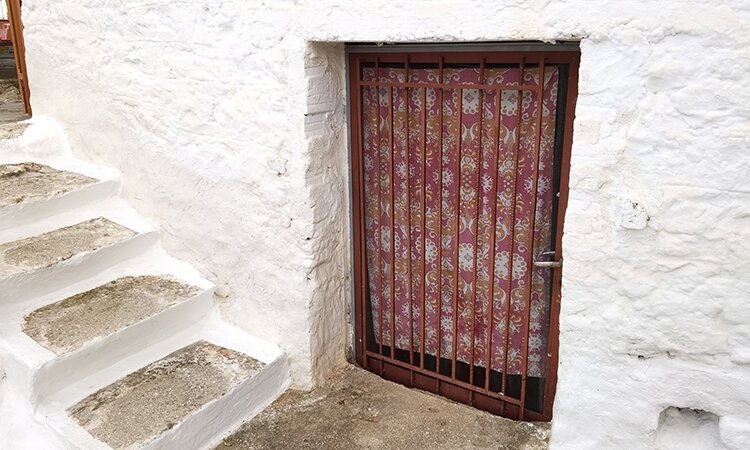
The old basement can be seen in houses on slopes, I don't think it exists in houses on plains. As the house is built on the slope the basement is on the face, it does have a door but inside the ground is dug. Normally they have wooden doors but my grandfather replaced it with a metal one many years ago. They used to store things but everyone here still stores containers for olive oil while my other grandmother used to store the hay for the animals.
2. The traditional oven
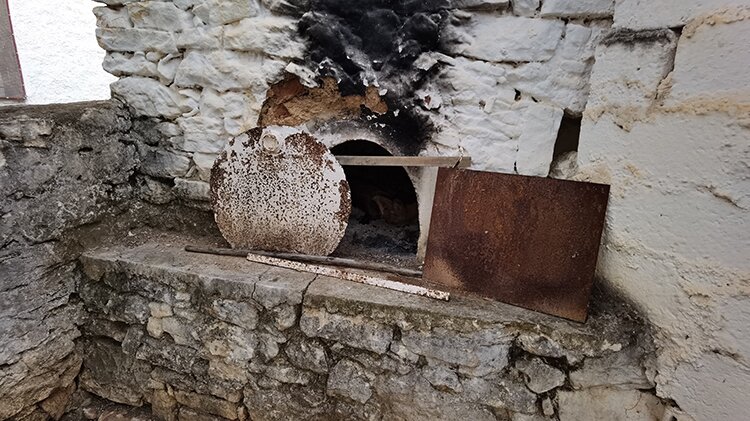
You must have all seen a traditional oven because it is still used in pizzerias. My aunt used such an oven until recently. I used to see her burning the wood inside, as soon as the coals were done, she was separating them with a stick to the left and right and put the oven pan with the food or sourdough bread in the middle. Of course she had all the necessary equipment: the special shovel and the wooden crate with places for 4 loaves of bread. In order for the roasting to be done properly she was sealing it with the lid and covering the cracks with cloths so that the heat would not escape.
3. The old scales
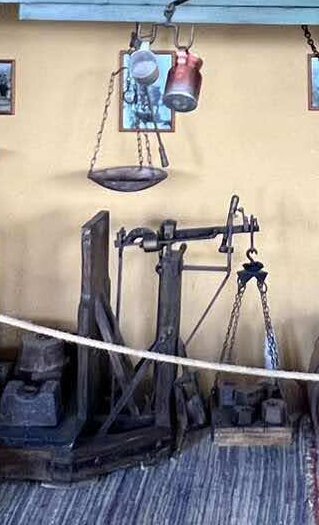
Above you can see a portable scale and below a large one with counterweights
Although they have been outdated for many decades they were used until the 80s by an old man in his grocery store in my village Kiveri in Argolis. He mostly used the palanza, the old portable scale. To weight the products he was stretching out his hand artfully, he was placing the product on the scale and he was moving the movable counterweight onto the rule. As soon as the scale was coming to balance the counterweight was indicating the weight. The rest of the scales he used were a small table scale with counterweights and a large one also with counterweights to weigh heavy products such as sacks, the counterweights of this scale were of course large and heavy.
4. The terraces
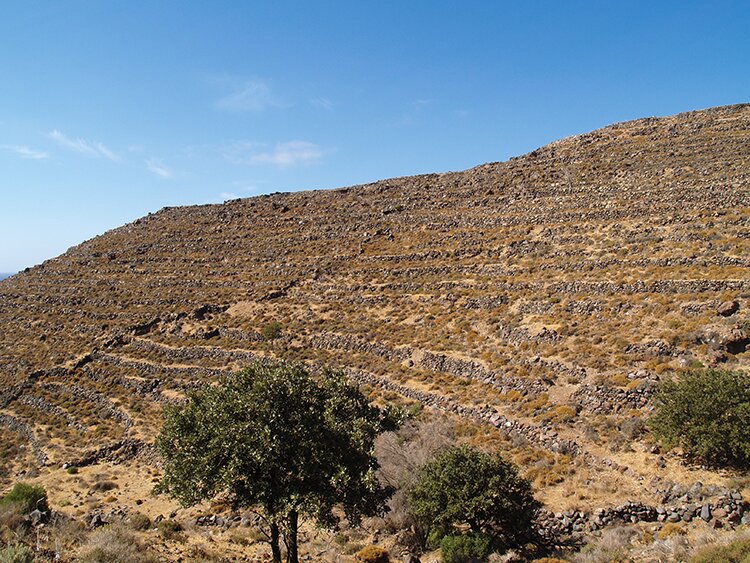
Terraces in Nisyros
When a location is mountainous and there is no plain for crops, the solution were the terraces. The slopes were raised with dry stones as if they were steps and plants or trees were planted there. The ground thus was being leveled and erosion from the rains was avoided. Some of the terraced slopes are so steep that I wonder how they were managing to farm on such a steep slope of land. They are essentially the fields of mountainous and inaccessible areas. Usually nearby there are also old houses where the farmers were living when they had farm works. Today they have all been abandoned and are no longer cultivated.
5. The old living room
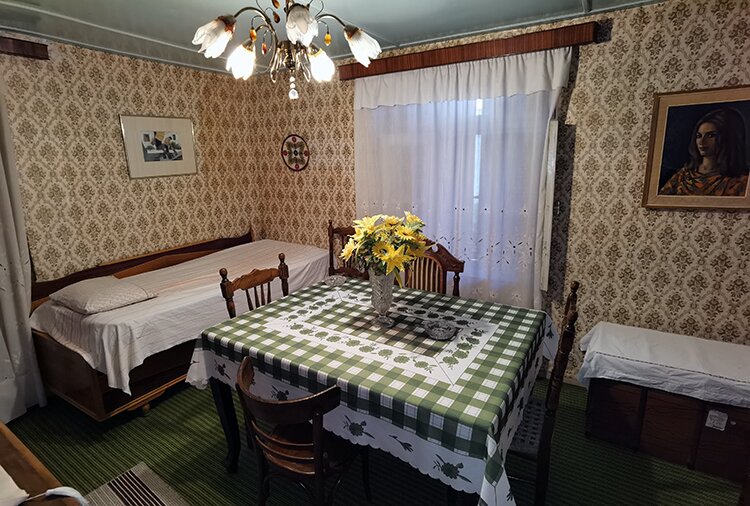
The living room of the old time. Not all the houses had one, except those that the owner could afford it. My grandmother had one, but it is so small that it was practically never used. Its characteristics are the wallpaper, the carpet, the old furniture, the old porcelains and a sofa. On the sofa she had a large well-dressed sitting doll but at some point she threw it away.
6. The old closets
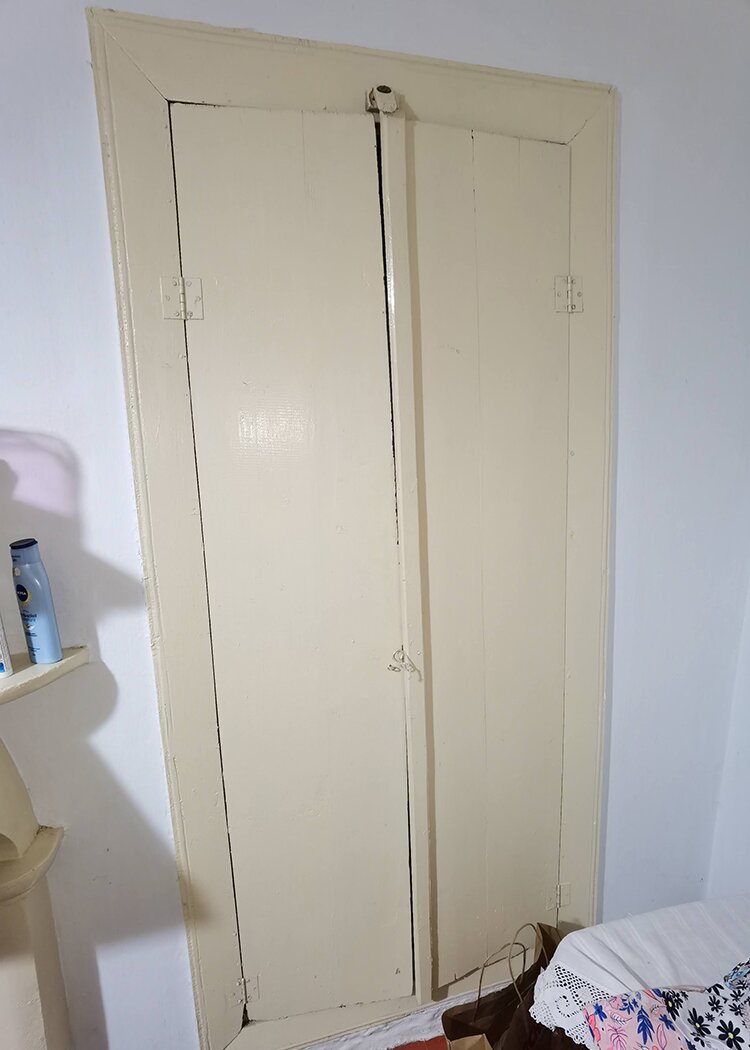
Built-in closet
My grandmother had both a built-in and a portable closet. The built-in one is very small and looks like a standing tomb. When I was sleeping in the room, I kept an eye out for anything to come out of there. It is very small and hardly practical. Portable closets are the large regular closets that old houses used. It's not like now when the carpenter takes the measurements, builds it and installs it. This one was bought whole from the store and had to be moved into the bedroom.
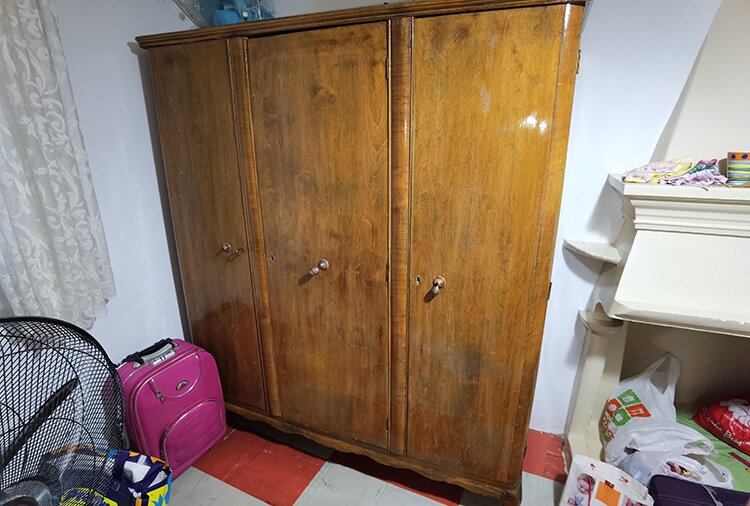
Portable closet
7. The stone house
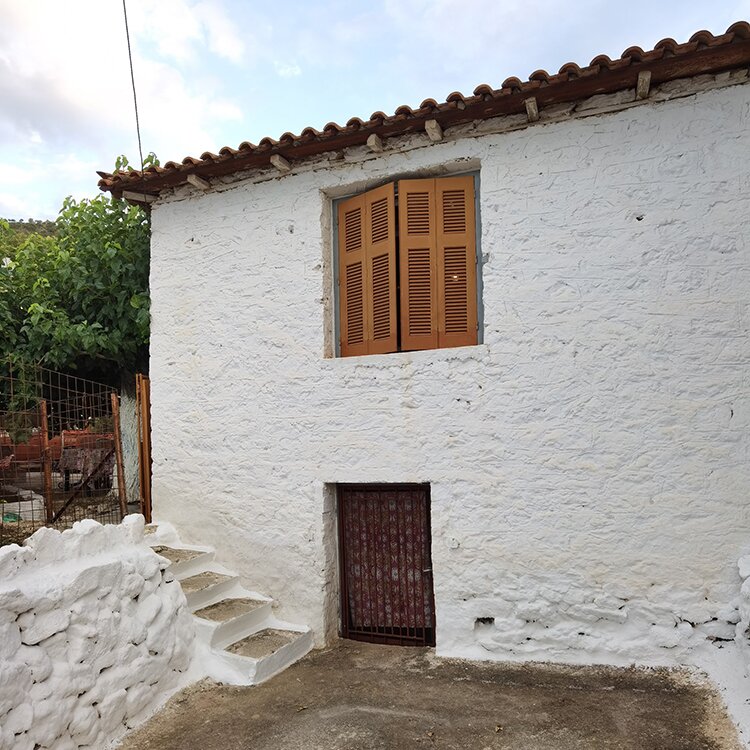
Life in a stone house is quite different compared to a modern one. The toilet is outside, the oven is a wood stove which is also used for heating. A fireplace is also used for heating but heat is not uniform throughout the house, because these houses are divided into rooms, each heating medium heats the room it is in. A room without a stove or a fireplace is cold. The walls are half a meter thick and the ceilings are wooden. If the inhabitants did not abandon it at some point, some modern things were introduced such as gas stoves. But the nicest thing is the yard with my grandmother having mulberry trees, vines, flowers, vegetables, lots of pots, lemon trees and basil. Usually the old houses are white in color, that is, they are whitewashed, while some are made of stone without any color.
During the summer in order to find some coolness we were sitting under the mulberry tree while in the evening for anyone who got warm there was a bed in the basement.
8. The carts
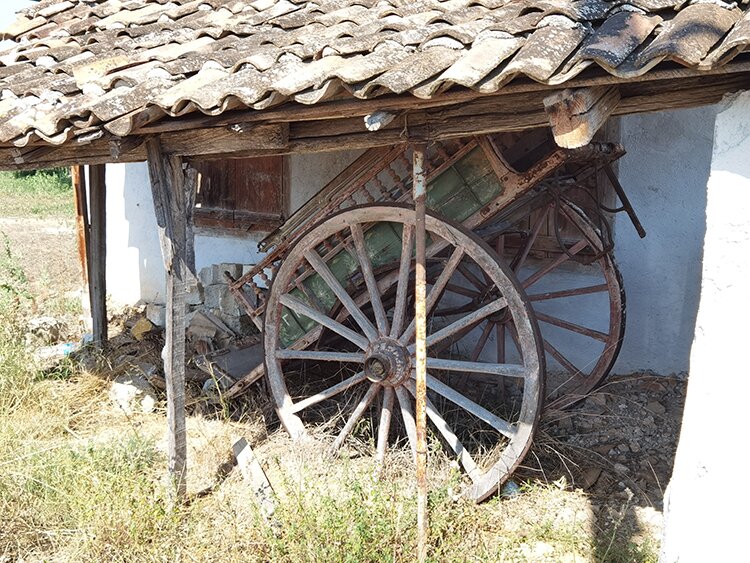
I never saw carts in use, I'm not that old. But I spotted this one in New Tiryns and I photographed it. It is the old means of transport that horses and mules were pulling it.
9. The chest
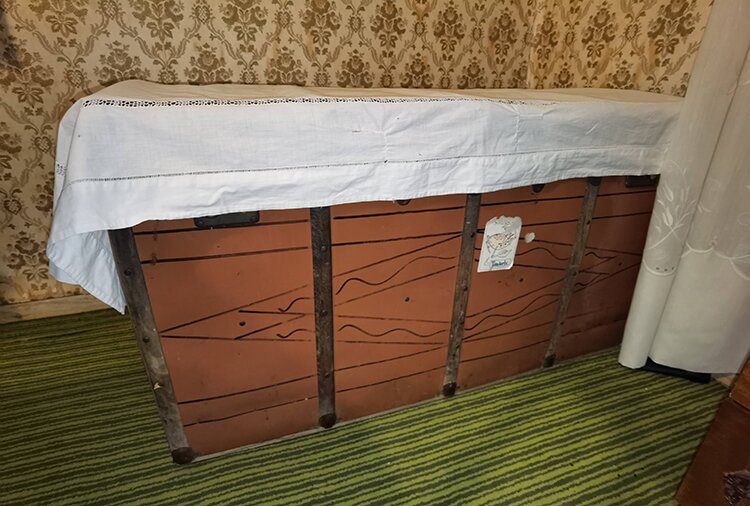
My grandmother had three chests. I was using one in the summer when I was there on holidays. The old houses did not have chests of drawers or bedside tables, so chests had this role. The truth is that they are not easy to use, I used to put my clothes in horizontal rows and as soon as each row was finished I made another one on top. They were probably easier to use with sheets and blankets. My grandmother had a chest full of these and closed as it was she had put her dowry on it, a mountain literally of blankets and a sheet on top to protect it from dust.
10. Whitewashed houses - yards - paddocks
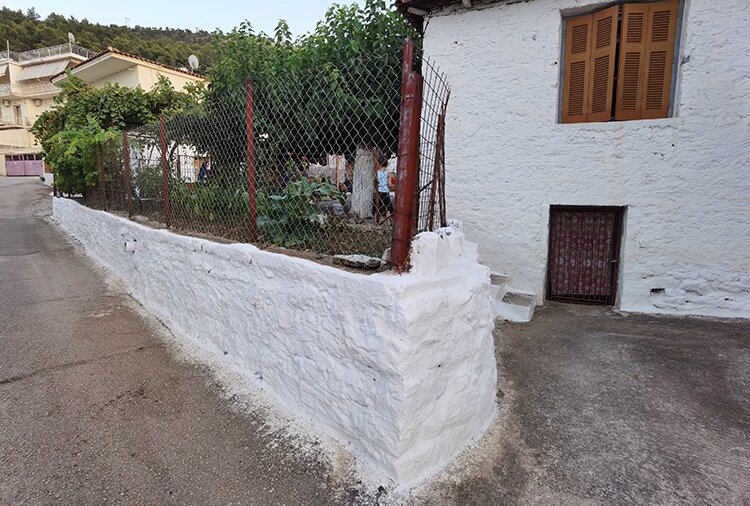
The white color is not a synthetic colour but whitewash. My grandma had a barrel full of whitewash with water to keep it fresh and not dry out. Every Easter everyone in the villages whitewashes their houses, yards and paddocks. I had never whitewashed because I was young and there is a risk of the whitewash getting into the eye. When grandma used to whitewash she would kick me out of the house and I had never seen her whitewash, I might run as a kid I was and fell on the bucket of whitewash. Whitewashing was done with a large brush, she put it in the bucket and then whitewashing the surfaces.
11. The place for the animals
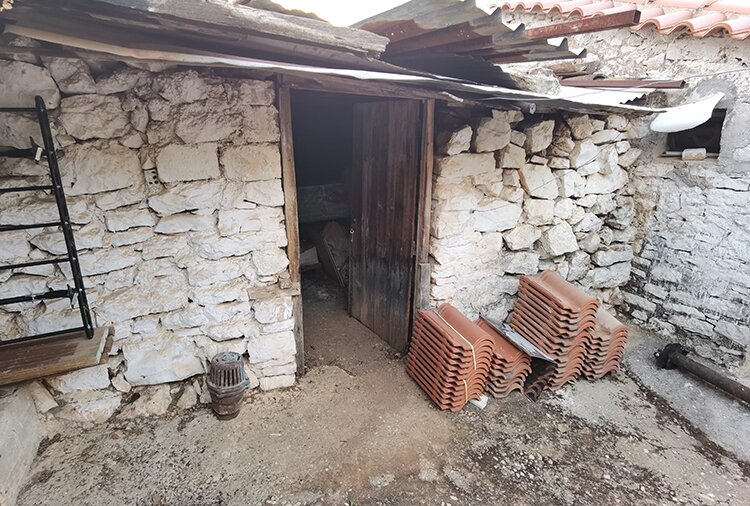
Some houses had a space for animals, not for the herds of course, but to put hens for eggs and for animals destined for slaughter. An aunt of mine still has a place for animals outside her house, her parents had too. My grandmother although she didn't have such a place at home, had an enclosed space where she was bringing a sheep every Easter to be slaughtered. She was also doing some favors. A relative with a herd of sheep would bring the ewes about to give birth to my grandmother so that my grandmother could watch them and when it was time to give birth to notify her. Logical because in the mountain fold who would watch it. The relative who was experienced in giving birth to ewes, stayed at home for many hours until it gave birth to the little lamb.
12. The alley stairs
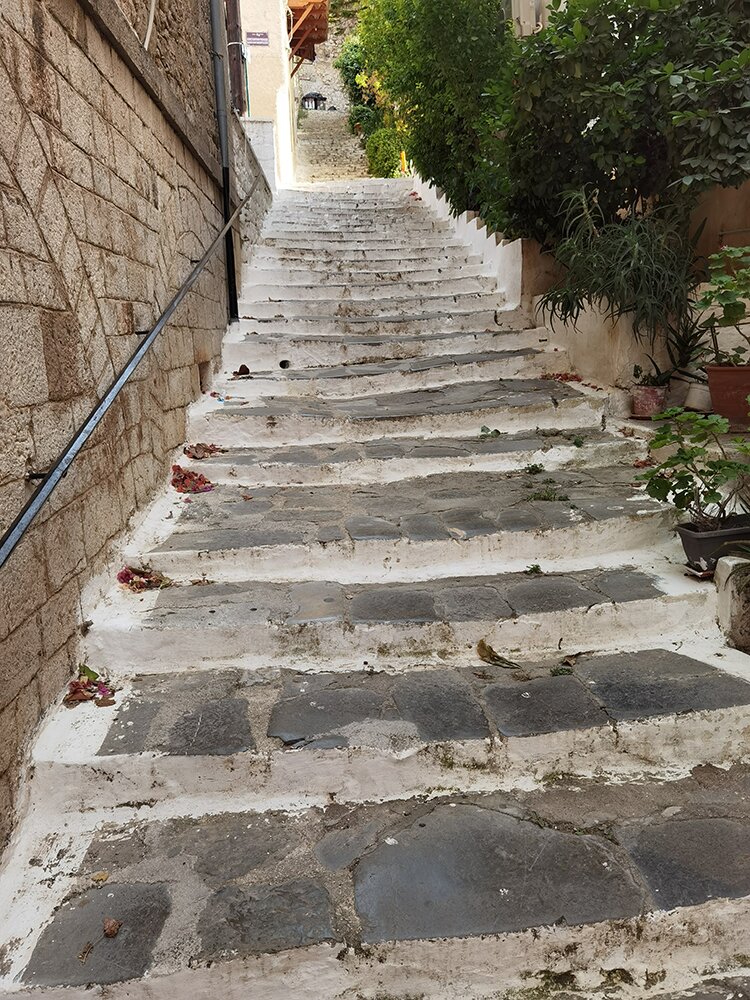
Alley stairs in Nafplio
You may have seen them in old settlements on islands or in mainland Greece. They were built on sloping ground. The big steps were not intended for humans, human walking is not suitable for these steps but for the mules who did the transports. Such scenes I have seen in Hydra island where no cars are used and mules are used for all transport, even for the bags to go from the port to the house.
13. The mudbrick
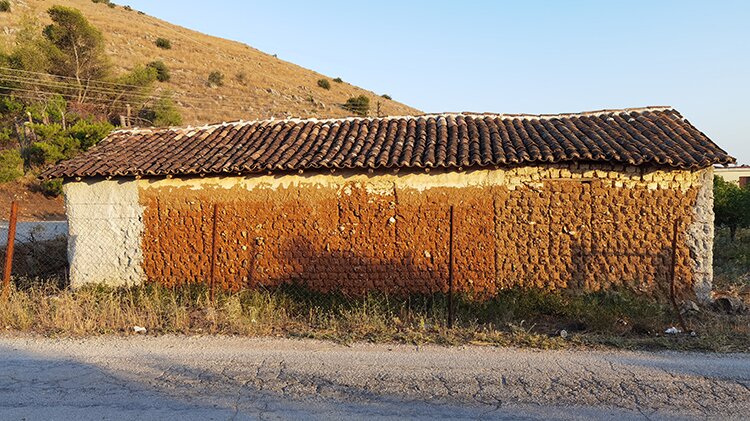
An ancient building material made of treated earth and straw, it is rectangular in shape and looks like a cement block of earth. It was used in plains where there was no stone. It must have been the building material of the poor because all the brick houses I have seen are very small. If the roof has fallen the brick over time is disintegrated by the rain.
14. The coffins

I still remember coffins being widely used, in the village they were used by groceries, bakeries and households. It was used to transport and store food. They were extremely easy to use, some were wide and some were narrow. The bakeries put the bread, the groceries, the street markets and the street vendors the food and fruits they were selling. They also put them on the mules, one on the left and one on the right. They had a characteristic smell.
15. The noria
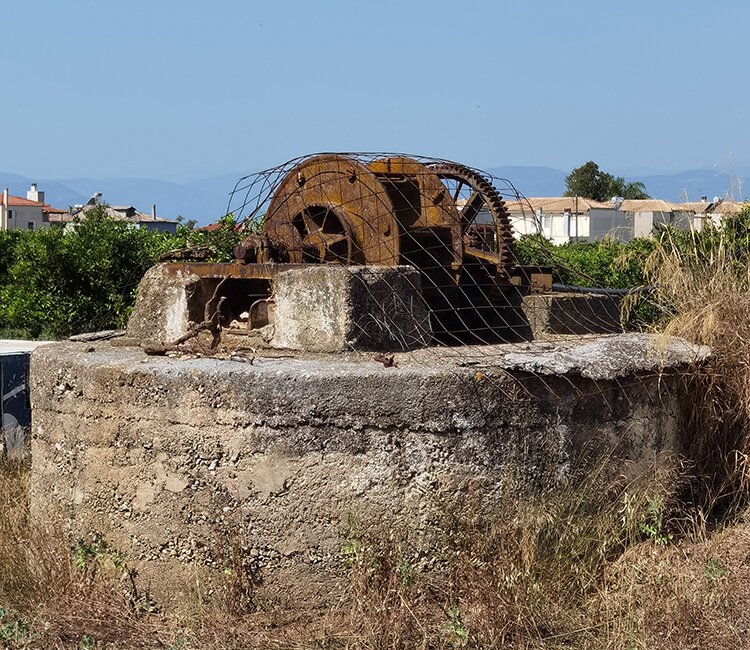
The well before it turned electric and at the push of a button the water was piped up to the surface to irrigate the fields there was the noria. The mule propelled it, turning round and round, turning axles and gears. The gears moved the belt with the buckets. The buckets would go down into the well and come up full of water.
16. The threshing floor
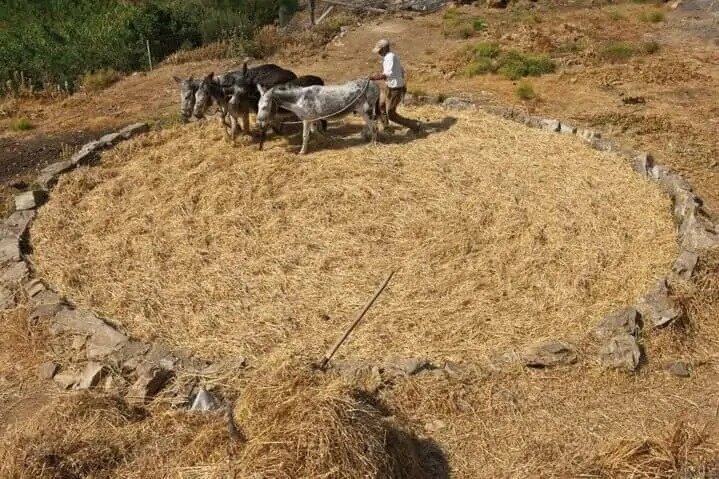
Photo by sithonia-trails.gr
My mother has told me stories with threshing floors. They are stone-built with a circular shape and leveled. They spread the wheat after the harvest to be trampled by the donkeys who moved in a circle. Then the product was the raw material that went to the mills for grinding to produce flour. Some threshings were family-owned while others were businesses where farmers who did not have their own threshing floor paid to have their wheat threshed.


